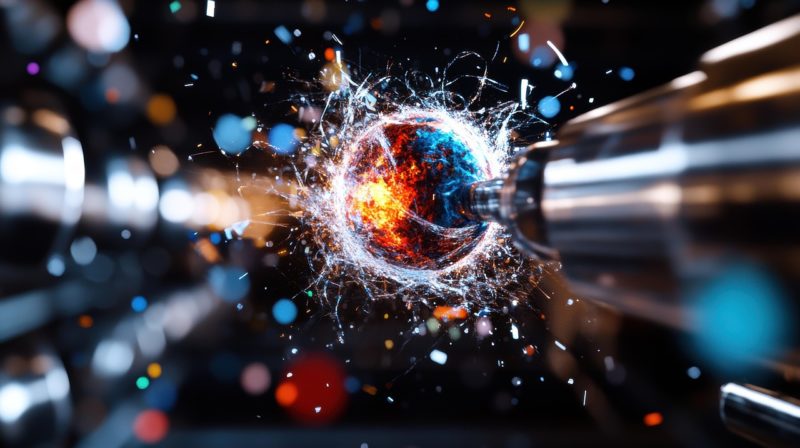KATRIN Experiment Further Constrains Neutrino Mass to Less Than 0.45 eV
14 April 2025 · Uncategorized ·
Source: · https://technews.tw/2025/04/11/katrin-experiment-neutrino-mass/

Neutrinos are often likened to ghosts due to their elusive nature and significant influence on the large-scale structures of our universe. Scientists continue striving to precisely determine their mass, a challenging endeavor that recently yielded new results from Germany’s KATRIN experiment indicating an upper limit for neutrino mass not exceeding 0.45 eV—approximately one million times lighter than an electron.
Neutrinos possess such minuscule masses and lack electrical charge that they interact only through weak forces and gravity; the latter is exceedingly faint at subatomic scales. This characteristic allows them to pass through ordinary matter with minimal obstruction, making detection exceptionally difficult. Studying neutrinos provides crucial insights into the fundamental structure of our universe and its evolution while also offering information about the weak interaction—potentially leading to discoveries in areas such as supersymmetry theories or dark matter characteristics.
Despite their importance, neutrino mass remains one of the great unknowns among fundamental particles. Currently, scientists can only estimate upper and lower limits for these masses; numerous experiments are underway attempting to measure this elusive property directly. KATRIN’s 2022 announcement established an electron antineutrino mass limit of 0.8 eV as a key milestone in that effort.
The experiment determines neutrino mass by analyzing tritium beta decay, meticulously measuring the energy distribution between electrons and anti-electron neutrinos during the process—a release totaling only about 18.6 keV.
KATRIN’s team recently published updated analysis results from February 2022, refining the upper limit for a neutrino's mass to not exceed 0.45 eV (less than one billionth of a proton). This refined understanding has implications for cosmological questions concerning galaxy formation and their impact on cosmic expansion since the Big Bang. The experiment is scheduled to continue data collection until late 2025, with final results anticipated to further constrain neutrino mass upper limits below 0.3 eV.
This research was published in *Science*.
(First image for reference only; source: pixabay)
Neutrinos possess such minuscule masses and lack electrical charge that they interact only through weak forces and gravity; the latter is exceedingly faint at subatomic scales. This characteristic allows them to pass through ordinary matter with minimal obstruction, making detection exceptionally difficult. Studying neutrinos provides crucial insights into the fundamental structure of our universe and its evolution while also offering information about the weak interaction—potentially leading to discoveries in areas such as supersymmetry theories or dark matter characteristics.
Despite their importance, neutrino mass remains one of the great unknowns among fundamental particles. Currently, scientists can only estimate upper and lower limits for these masses; numerous experiments are underway attempting to measure this elusive property directly. KATRIN’s 2022 announcement established an electron antineutrino mass limit of 0.8 eV as a key milestone in that effort.
The experiment determines neutrino mass by analyzing tritium beta decay, meticulously measuring the energy distribution between electrons and anti-electron neutrinos during the process—a release totaling only about 18.6 keV.
KATRIN’s team recently published updated analysis results from February 2022, refining the upper limit for a neutrino's mass to not exceed 0.45 eV (less than one billionth of a proton). This refined understanding has implications for cosmological questions concerning galaxy formation and their impact on cosmic expansion since the Big Bang. The experiment is scheduled to continue data collection until late 2025, with final results anticipated to further constrain neutrino mass upper limits below 0.3 eV.
This research was published in *Science*.
(First image for reference only; source: pixabay)